#trail infrastructure
Explore tagged Tumblr posts
Text
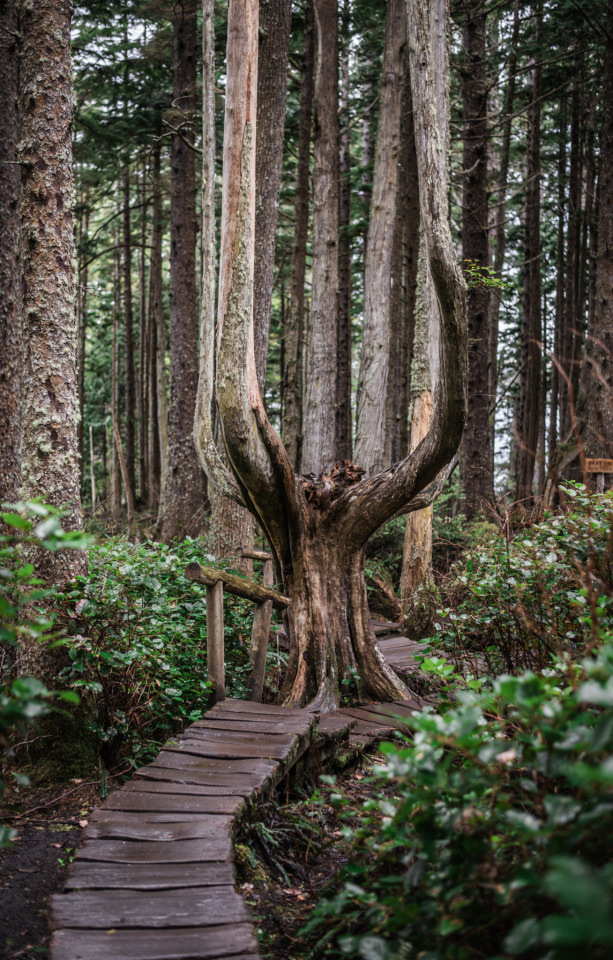
Trail-Side Tree
#artists on tumblr#original photographers#original photography#hiking#pacific northwest#nature#washington#pnw#nikon#orofeaiel#cape flattery#boardwalk#trail infrastructure#tree#forest#naturecore#neah bay#trail
543 notes
·
View notes
Text
Lots of weekend landscaping work happening at the Montlake lid this rainy Saturday – it’s crunch time before the opening ceremonies that’re finally happening next week.
I will, naturally, be dropping a revised MEGAMAP the day before, this coming Friday afternoon or evening (depending upon scheduling). I’ll also be dropping an updated Greater Northshore since there’s some Seattle-area updates which show up in its coverage area as well.
They’ll be posted here for free download, as always. The current version is from November.
And if you like my bike nonsense – or any of my other nonsense, for that matter – I have a patreon. And if you’re already there, as always, you have my heartfelt thanks! ^_^

7 notes
·
View notes
Note
I saw a recruitment TikTok by the Utah conservation corps and it reminded me of your firewatch au so of course I had to go back and read it and now im crying
SLFJSLFJSLKF
God I love Utah btw. Some of the prettiest National Parks in the US are there, and I've only been to two of them. I need to get my numbers up!

speaking of conservation corps should i buy this civilian conservation corps sticker set and put one or two on my new laptop? it's like $4 and i kind of regret passing it up when i first saw it in a state park gift shop in Arkansas last year
#quara asks#btw we owe like. basically all our park infrastructure and trails and fire lookouts and stuff to the CCC in the 1930s#part of roosevelt's new deal to give young men jobs during the great depression
4 notes
·
View notes
Text
So my city has managed to find a way (two ways actually) to make the use of multi-use trails in in lieu of bike lanes even more horrific than that initial phrase sounded.
They aren't continuous. The trail ended. I realised after I rejoined the rest of traffic that what the city expected the kids and other people who weren't up for regular cycling (no bike lane at all) to do was to *cross the road* and bike on that side. (This isn't the only place in the city where there's one multi-use trail for a road, so you have to bike against traffic, but at least the other one doesn't have that sudden ending.)
On the same trip I came to the end of a bike lane (I won't even bother complaining about that bike lane, because it's nothing compared to the trail I had to take). It was properly signed and everything, I moved over to the big lane. (My kids could have done this by the way, there was almost no traffic, I don't want to hear from people who like to pretend that it's infrastructure rather than cultural support and good drivers who dictate if people ride bikes claiming that having to ride normally was a problem.) As I cross the intersection (remember, there was no other traffic - I was right up at the stop line), I see that there's a multi-use trail starting on the other side.
With no curb cut.
#yes I might have considered a “hop and walk” at the intersection#if I had known that the trail was there#but I generally don't find#that failing to suffer through a multi-use trail#is as dangerous as not using other cycling infrastructure#I don't know if the drivers understand better that that's BS#or they just don't notice it they way they notice fake bike lanes#and so they don't take it out on me
6 notes
·
View notes
Text
Finished my first week as a field assistant at a bird banding station yesterday and so far things are going well! I got to see the local natural history museum after my HR training and there was a huge farmer's market in the town by the nature reserve I'm living at. I got local syrup and new jellies to try and some biscotti to send to my mom back home :)
#traveling to places like this make me wish so much that we had these kind of resources back home...#like there's actual community infrastructure here!#markets! parks! trails! museums! activity centers!#it's a bittersweet thing to experience#i speak
2 notes
·
View notes
Photo

President Joe Biden's Bipartisan Infrastructure Law sign on the Midtown Greenway in Uptown Minneapolis.
0 notes
Text
Los Lomitas Trail
Los Lomitas Trail in South Mountain Preserve is the connector trail between the middle of the developed picnic lands and the giant parking lot that separates the conference center from the group picnic grounds. It is the third and final leg of my South Mountain Infrastructure Loop. For all that, this trail is worth doing on its own. Because this is part of the loop, we start in the middle of the…

View On WordPress
#Hikes close to restrooms#Hikes near Phoenix#hiking#horse trenches#Los Lomitas Trail#Phoenix#Phoenix South Mountain#South Mountain day hikes#South Mountain Infrastructure Loop
0 notes
Text
"The Lower Ninth Ward of New Orleans has recently witnessed an incredible eco-renaissance following decades of damage and neglect.
Led by a local community development group, a 40-acre wetlands park has been restored to glories past with hundreds of local trees that attract over a hundred species of birds, plus joggers, picnickers, and nature lovers besides.
The story begins with Rashida Ferdinand, founder of Sankofa Community Development Corporation (CDC). Growing up in this historic part of New Orleans, where Black homeownership thrived, where Fats Domino was born, and where locals routinely went out into the wetlands to catch fish and crustaceans, she watched as it suffered from years of neglect.
Poor drainage, ruined roads, illegal trash dumping, and unmitigated damage from hurricanes slowly wasted the wetland away until it was a derelict eyesore.
In the name of restoring this wild heritage indicative of the culture in the Lower Ninth, and in order to protect her communities from flooding, Ferdinand founded the Sankofa CDC, and in 2014 entered into an agreement with the City of New Orleans for the restoration of Sankofa—a 40-acre section of neglected wetlands in the heart of the Lower Ninth.
The loss of Sankofa’s potential to dampen flooding from storms meant that over the years dozens of houses and properties were flooded and damaged beyond the ability of the inhabitants to recover. Forced out by a combination of nature’s fury and government failure, the cultural heritage of the community was receding along with the floodwaters.
Ferdinand knew that restoring natural flood barriers like Sankofa was key to protecting her community.
“Hurricane protection is a major concern in the community, but there’s a lack of trust in the infrastructure systems that are supposed to protect us,” Ferdinand told the Audubon Society.
Today, Sankofa Wetlands Park is a sight to behold. Hiking trails snake through a smattering of ponds and creeks, where bald cypresses and water tupelo trees continue to grow and cling to the ground even during storms. Picnic benches have appeared, wheelchair-accessible trails connect sections of the park to parts of the Lower Ninth, and local businesses are seeing more visitors.
It needed a lot of work though. Thousands of invasive tallow trees had to be uprooted. 27,000 cubic meters of illegally dumped trash compacted into the dirt had to be removed. A 60-year-old canal dug by the US Army Corps of Engineers had to be disconnected, and all new native flora had to be planted by hand.
Audubon says that Ferdinand routinely can’t believe her eyes when she looks at the transformation of Sankofa into its current state.
“Seeing butterflies, birds, and other pollinators in the park is a sign of a healthy ecosystem,” she says. “All we had to do was create the right conditions.”
Slated for official completion in 2025 with an outdoor amphitheater, interpretive signage, and additional trails, Ferdinand and the CDC have their eyes set on an even larger area of wetlands to the north of Sankofa.
Along the way, Ferdinand and the CDC attracted many helping hands, and entered into many partnerships, But the catalyst for change arose from the spirit and determination of one woman in the right place at the right time, for the benefit of hundreds in this historic heart of a historic city."
-via Good News Network, September 17, 2024
#new orleans#louisiana#nola#united states#wildlife#wetlands#ecology#ecological restoration#conservation#good news#hope
3K notes
·
View notes
Text
starlink pisses me off
the issue of its impact on astronomy and light pollution has been discussed a lot, and is a very real issue (i've noticed up to 10% of the frames i take while doing astrophotography being rendered unusable by starlink trails), but there's an even bigger issue
not only does starlink constitute the majority of active satellites in orbit, with over 6,000 already up and potentially over 30,000 planned, but these satellites are disposable
each satellite only has a lifetime of 5-7 years (not including satellites that prematurely fail), and re-enters earth's atmosphere and disintegrates at the end of its life, and is then replaced by newly launched satellites
it's also worth mentioning that aluminum from re-entering satellites forms aluminum oxide, which can damage the ozone layer and risks reversing the recovery of the ozone hole
and this is touted as progress, "the future"! the way we bring high-quality internet to anyone who doesn't live in a big city or a wealthy country. a gift to all humanity! (except elon musk gets to deny it to whoever he wants)
and it is literally unsustainable
the so-called internet infrastructure of the future relies on frequent rocket launches spewing carbon dioxide and black soot into the atmosphere, and disposable satellites that destroy the shield that protects all life on earth from UV radiation
the atmosphere is a global commons. orbit is a global commons. yet a single company owned by a single fascist billionaire has appropriated a vast swath of orbital space and filled it with infinite trash machines - without any international regulation. but bring this up in any space fan circles, and you'll be met with techbros screaming at you and calling you an enemy of humanity for not thinking that elon musk should be able to do whatever he wants without regulation
starlink isn't the future, it's a cancer filling our sky with trash (and i guess some people get kinda expensive internet along the way? oh yeah btw the poor people they're talking about starlink helping can't afford it)
anyway fuck starlink, they should stop launching these trash satellites, if you want everyone to have internet we should build more publicly-owned fiber instead
5K notes
·
View notes
Text
How does one design architecture that promotes regional tourism and cultural exchange?
Designing Architecture that Promotes Regional Tourism and Cultural Exchange Introduction Designing architecture that promotes regional tourism and cultural exchange is a powerful way to showcase the unique heritage, traditions, and attractions of a region. Architecture plays a crucial role in creating memorable landmarks, immersive experiences, and vibrant spaces that draw tourists and facilitate…
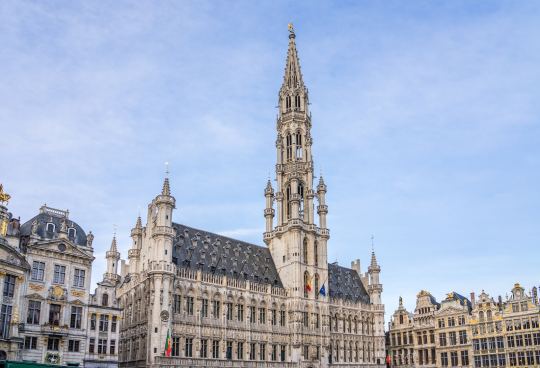
View On WordPress
#adaptive reuse#architectural design#architectural festivals#cultural exchange#cultural heritage centers#cultural sensitivity#iconic landmarks#interpretive trails#local culture#regional tourism#site integration#sustainable design#sustainable tourism infrastructure#visitor experience
1 note
·
View note
Text
Peoria’s first roundabout: in Springdale Cemetery.
Welcome to a simple grassway around an elevated circle (made of concrete? Stone?) surrounding an obelisk within Springdale Cemetery. It’s a different sort of traffic circle. No cars, for one. No road signs either—and you can stop wherever you want. Not as long as residents of the immediate area, to be sure, but long enough to regroup, maybe pose for a photograph. It’s obvious where to ride or…

View On WordPress
0 notes
Text
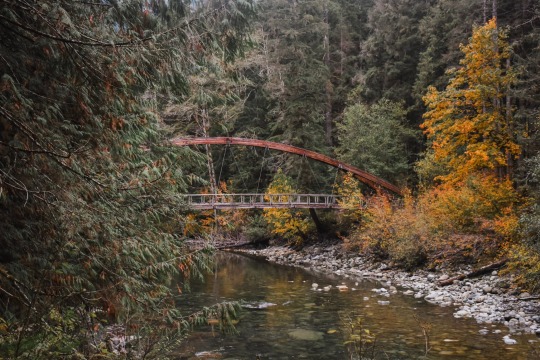
Bridge over Snoqualmie River
#artists on tumblr#original photographers#original photography#pacific northwest#hiking#nature#washington#nikon#pnw#orofeaiel#snoqualmie river#bridge#forest#trail infrastructure#fall colors#autumn vibes#landscape#nature photography
62 notes
·
View notes
Text
“The Israeli military has a history of attacks on media structures,” Carlos Martinez de la Serna explained. In May 2021, a tower housing the Qatari media organization Al Jazeera and the American news agency The Associated Press (AP) was destroyed by three missiles, on the basis, the Israeli military claimed, of an imminent threat posed by Hamas’s presence in the building. When questioned publicly, Israel provided no evidence to support this claim. Since October 7, 2023, the phenomenon has taken on unprecedented proportions. In response to the Hamas terrorist attack on Israeli soil, the Israeli military has relentlessly bombarded the Gaza Strip, a 365-square-kilometer territory barely larger than Malta. News coverage in the Gaza Strip has become extremely limited. “When you look at the conflicts around the world … you would usually have the international media on the ground,” said Irene Khan, UN Special Rapporteur on the promotion and protection of the right to freedom of opinion and expression. “None of them have been allowed access. Or they’re embedded within the IDF.” Only Gazan journalists can report on what is happening in the Gaza Strip. They struggle daily to survive and find places to take refuge. In many cases, their places of work no longer exist. According to the Palestinian Journalists’ Syndicate (PJS), around 70 press organizations, including local radio stations, news agencies, transmission towers, and journalist training institutes, have been partially or completely destroyed since the start of the war. Forbidden Stories has carried out this investigation in collaboration with AFP, Arab Reporters for Investigative Journalism, Le Monde, Paper Trail Media and other international media outlets as part of the Gaza Project. Supported by the analyses of experts in ballistics and audio, it illustrates one of the many strategies used by the Israeli military to stifle information in Gaza: the destruction of press infrastructure.
25 June 2024
494 notes
·
View notes
Text
Here Are My Top 10 Favourite Ants
(Updated due to public outcry and political pressure.)
No. 10 - Yellow Crazy Ants
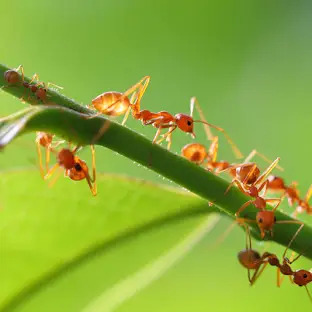
These guys are on a list of "one hundred of the world's worst invasive species" formulated by the International Union for Conservation of Nature (IUCN), having invaded ecosystems from Hawaii to the Seychelles.
But don't hate just because they are awesome at establishing themselves in a new habitat due to their aggression toward other ant species, lack of aggression toward members of their own species, efficient recruitment, and large colony size. Respect the hustle!
No. 9 - Paraponera Clavata
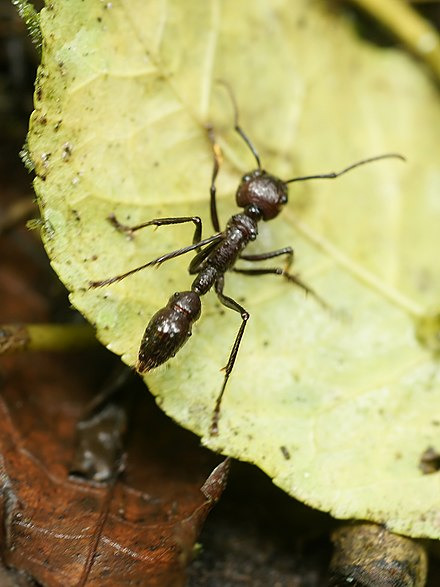
Also known as the "bullet ant," "the one wounding deeply," or "24-hour ant", referring to the full day of pain that follows being stung.
This ant's sting currently ranks the highest of all insect stings on Justin O. Schmidt's informal sting pain index, at 4.0+. Some victims compared the pain to that of being shot, (hence the nickname,) with "waves of burning, throbbing, all-consuming pain that continues unabated for up to 24 hours."
Lymphadenopathy, edema, tachycardia, and fresh blood appearing in human victim feces are common symptoms from even a single sting.
Un-fuck-with-able.
No. 8 - Honeypot Ants
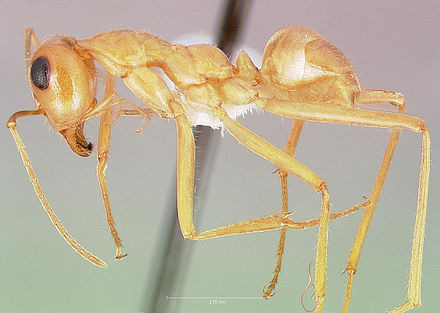
The name honeypot ant comes from the peculiar development of replete workers, whose abdomens become so swollen with food that they are used by the rest of the colony as living food storage. They are "drained" during famine, usually the wintertime, to sustain the colony, leaving them as "flaccid depletes."
Disgusting. 10/10
When a replete worker fills with food, a portion of her digestive tract swells and displaces other abdominal organs. It can expand about four to five times its normal linear dimension when they are fully engorged with food.
I can relate. I have eaten pasta in such quantities to displace my own organs many times.
No. 7 - Red Imported Fire Ants
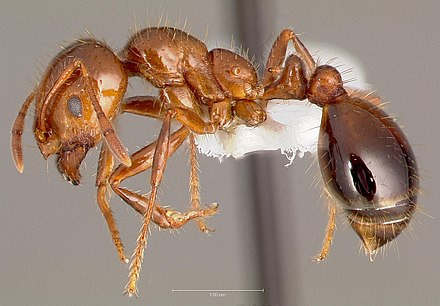
Though South American in origin, the red imported fire ant has been accidentally introduced to many other parts of the world.
More than 14 million people are stung by them in the United States annually. Most victims experience intense burning and swelling, followed by the formation of sterile pustules, which may remain for several days. Up to 6% of people may suffer from anaphylaxis. More than 80 deaths have been recorded from red imported fire ant attacks.
These ants thrive in urban areas. Nests can be built under pavements and foundations. This means not only can they damage or destroy individual structures, but red imported fire ants can have an affect on broader infrastructure, damaging land, business and property values. In agriculture, they can damage crops and machinery, and threaten pastures. They also pose a threat to animals and livestock, capable of inflicting serious injury or death, especially on young, weak, or sick animals.
With annual damages estimated in the billions of dollars, these ants are considered the second worst thing to arrive on North American soil since 1492.
No. 6 - Black Garden Ants
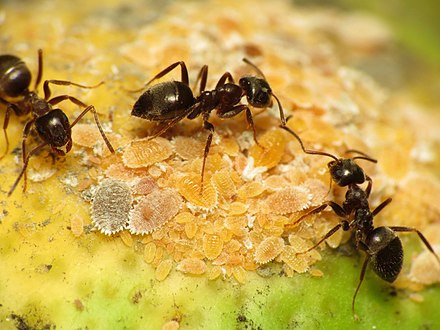
When building their colony, these ants will structure it so as to inhibit the transmission of different contagions. Different communities within the colony are segregated by a limited number of connective nodes, allowing for greater protection of vulnerable hive members, such as larvae and pupae.
A trait I could only wish other species performed so well.
No. 5 - Pharaoh Ants
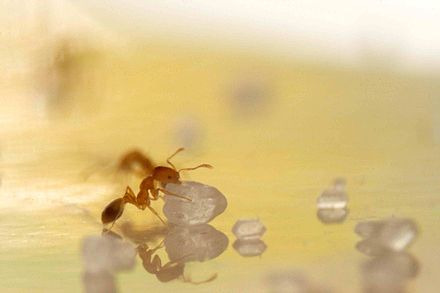
These ants utilize three types of pheromones. One is a long-lasting attractive chemical that is used to build a trail network. It remains detectable even if the ants do not use the trail for several days.
The second pheromone is also attractive, but will decay to imperceptible amounts in a matter of minutes without reapplication. This pheromone is useful in marking food sources as these are unpredictable and liable to change quickly, so not worth the longer-lasting pheremone.
The third pheromone is a repellant. If an individual finds an unprofitable area with little food or significant danger, it will release this repellant pheromone, which will warn others and cause them to look elsewhere. While positive pheromones indicating lucrative foraging sites are very common in social insects, the pharaoh ant's negative pheromone is highly unusual and pharaoh ants were the first species found to employ such a thing.
No. 4 - Argentine Ant

This species is like the Mr. Worldwide of ants. It has established itself in every continent except Antarctica (including many oceanic islands.)
It even has "supercolonies" that extend across hundreds or thousands of kilometers, first reported in California in 2000, then in Europe in 2002, Japan in 2009, and Australia in 2010.
Several subsequent studies used genetic, behavioral, and chemical analyses to show that supercolonies on separate continents actually represent a single global supercolony.
The researchers stated that the "enormous extent of this population is paralleled only by human society."
How can you not admire (and fear) the ambition and the achievement?
No. 3 - Leafcutter Ants
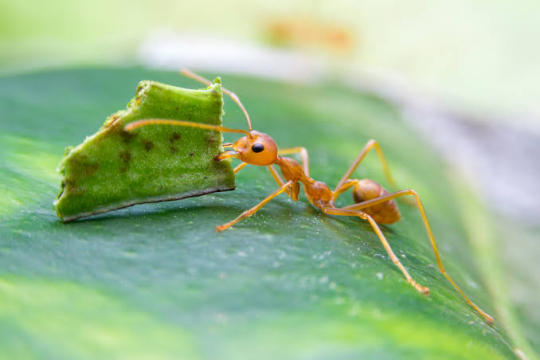
"Leafcutter ants" is a bit of an umbrella term, as it consists of over 45 ant species, but this gang is just so remarkable. Next to humans, leafcutter ants form some of the largest and most complex animal societies on Earth. They are known for their advanced agricultural practices. These ants are not merely foragers but skilled farmers, cultivating their own food by collecting specific kinds of leaf matter in order to produce specialized fungi in their nests.
No. 2 - Formica Fusca
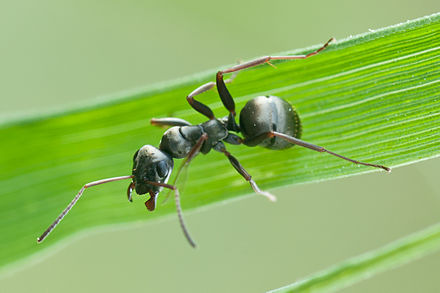
These ants, (sometimes called silky ants or dusky ants,) are fast to learn, and only a single presentation of stimulus is enough for them to form a genuine long-term memory. This formed memory is also resistant to extinction.
Ants of this species can also detect volatile organic compounds emitted by cancer cells. After a 3-trial conditioning, they can differentiate cancer cell lines from healthy ones. They can also differentiate between at least two different cancerous cell lines.
A similar ability to detect human tumours has been shown in more recent studies.
No. 1 - Weaver Ants
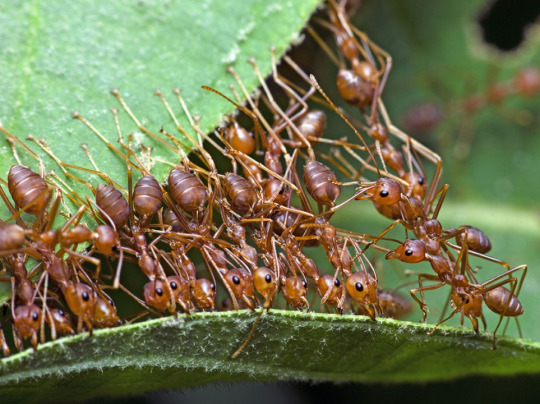
An arboreal species, (i.e. they live in trees,) weaver ants are known for their unique nest building behaviour where workers construct nests by weaving together leaves using larval silk. Colonies can be extremely large consisting of more than a hundred nests spanning numerous trees.
How they sew the leaves together is a remarkable feat of cooperation. Typically, dozens of ants will need to form a chain to first bridge a gap between two leaves, then pull them together so another team can hold them in position whilst yet more ants sew the gap together with silk. But adult ants can't make silk, so they have to use larvae to do it, picking the larvae up and using them like little pots of glue to spin a mat of silk between the two leaves. Altogether, a hundred ants might be involved in the same task. This is a pretty remarkable piece of evolution and a testament to the power of cooperation!

#ants#Myrmecology#bugblr#insectblr#bugs#insects#bug#insect#entomology#ant#antposting#invertebrates#antblr#parasites#parasitism#weaver ant#formica ant#leafcutter#bullet ant#fire ant
232 notes
·
View notes
Text
Prologue - Terms and Conditions

A/N: Here we go! I’m obsessed with these two already. Let me know if you are too 🤍
Pairing: Tony Stark x Female Reader
Warning: 18+ slow burn.
Terms and Conditions
The conference room was sharp and sterile, walls lined with glass and egos, and the temperature dialed to “passive aggressive.” The tension wasn’t hostile—it was rehearsed, corporate, polite. Like everyone had agreed to wear their best masks.
Tony Stark lounged like this was a poker night, not a merger signing. Armani suit, sunglasses pushed back into gravity-defying hair, one leg crossed lazily over the other. He twirled his pen as though he was about to sign away someone else’s soul.
You sat across from him, upright and composed, your Novastem folder neatly aligned with the packet of legal documents. The Stark Industries logo gleamed beside your own, as if the two had already shaken hands and agreed to tolerate each other.
A senior board member from Stark Industries cleared his throat and began, “Given the shifting focus toward sustainable innovation, this merger allows us to diversify our portfolio in a way that speaks to future markets. Novastem’s work with nanogrid energy systems has potential applications across Stark’s existing infrastructure…”
Tony’s eyebrows lifted slightly. He caught your eye across the table and mouthed: Nanogrid?
You gave a tight smile, then mouthed back: Look it up.
Another advisor chimed in, “And of course, with Miss Y/L/N’s engineering background and Stark’s R&D capacity—”
“—We’re practically a Hallmark success story,” Tony muttered under his breath. You shot him a look. He responded with an exaggerated shrug and the most unbothered wink known to man.
The rest of the meeting blurred into metrics, projections, and polite nods. You signed your part with efficient precision. Stark, predictably, added a dramatic flourish.
And just like that, you were legally bound to a man who probably hadn’t read a single bullet point on the proposal.
He leaned in, voice just above a whisper, “You realize this is the part where I say something charming and you pretend not to be impressed.”
“I’m not pretending,” you replied smoothly, rising to your feet.
.
Later that evening, the penthouse was exactly what you imagined a Stark-level habitat to be, impossibly sleek, a little cold, and humming with invisible tech you could feel in your bones. It was less home, more showroom, like even the walls were trying to impress someone.
Tony hadn’t bothered with the grand tour. He pointed vaguely toward the hall with a distracted, “Guest room’s the third on the left,” and vanished into the depths of wherever billionaires vanish after signing their souls away on legal paper.
You toed off your shoes by the door and wandered further in, suitcase trailing behind you with a whisper.
The place was… vast. And quiet.
Not eerily so—more like the quiet that wraps around you in the moments between chapters. The air felt charged in that too-clean, too-perfect way, like someone had pressed pause on life and forgot to hit play again.
You passed the living room—chrome and marble and enough screens to surveil a small country—and caught your reflection in the floor-to-ceiling windows. You looked tired. Or maybe just… transitioning. From who you were this morning, to whoever this was supposed to be now.
You didn’t mean to explore, but your feet led you through the space anyway. Past the kitchen that looked like no one had ever dared to cook in it. Through the hall where the lighting followed your movement, casting soft gold onto minimalist walls. Past rooms with closed doors you didn’t open.
And then, halfway through turning a corner, you froze.
A small sound barely audible, rustling behind one of the plants. Then the lightest little meow.
You blinked.
From behind a steel planter, a pair of eyes blinked back at you. Pale ginger and white, with the posture of a feline who had definitely been judging you this entire time.
“Oh!” you said, surprised. “Hello. You’re… cute. And very out of place.”
The cat tilted her head like she took offense to the ‘out of place�� part.
She sauntered forward with practiced confidence, tail in the air, and promptly began rubbing against your leg like you’d passed inspection.
You crouched slowly. “And you are…?”
There was no collar, but something about her aura screamed named and spoiled rotten.
A voice called distantly from the hallway—Tony’s.
“Try not to let her con you. She’s fluff with zero morals.”
You glanced up. “She yours?”
“She lets me live here, yeah.” A pause. “Dum-E.”
You blinked again. “You named your cat after your robot?”
Tony reappeared in the doorway, towel slung around his neck. He smirked. “Nah. I named my robot after my cat.”
.
A knock at the door startled you.
It cracked open slightly. “Hey,” said a familiar voice. Happy Hogan.
You blinked. “Happy?”
He stepped inside with a hesitant smile. “Thought I’d check in. You surviving the first night?”
“Barely,” you admitted.
Happy gave a small nod toward Dum-E, who was still curled smugly on your suitcase. “Careful. She once hissed at me for sneezing near her food.”
Tony’s voice called out from somewhere beyond the hall. “She was right to. That tuna was artisanal.”
Happy rolled his eyes. “He feeds her better than himself.”
You tried not to smile. Failed. “She’s already claimed me.”
“She does that,” Happy said fondly, then sobered a little. “You good? I know this wasn’t exactly the dream wedding.”
You looked around, then at the cat, then at the impossibly large penthouse.
“No. But I’ll manage.”
Happy nodded. “You’ve handled worse. You’ll handle this. And hey—if you ever need a real person to talk to… I’m around.”
He paused before adding with mock seriousness, “Just don’t feed the cat shrimp. It goes to her head.”
From down the hall, Tony’s voice again: “I told you, it was ONE time—”
You smiled—genuinely this time. “Thanks, Happy.”
.
You curled up in bed a few minutes later. Dum-E had relocated to the window, silhouetted in moonlight, tail twitching as she surveyed her new roommate.
You weren’t sure what tomorrow would bring.
But you knew one thing.
You were already becoming part of the chaos. And for now… that would do.

#tony stark x reader#tony stark fanfiction#tony stark imagine#arranged marriage au#tony stark fluff#tony stark smut#tony stark x you#the stark squad#mostly marvel musings#marvel fanfiction#tony stark#iron man x reader#iron man
94 notes
·
View notes
Text
Birds Sing Anew After Residents of New Orleans Ninth Ward Restore 40-Acre Wetland to Historic Glory https://www.goodnewsnetwork.org/birds-sing-anew-from-within-40-acre-wetland-restored-by-residents-of-n-orleans-historic-lower-ninth/
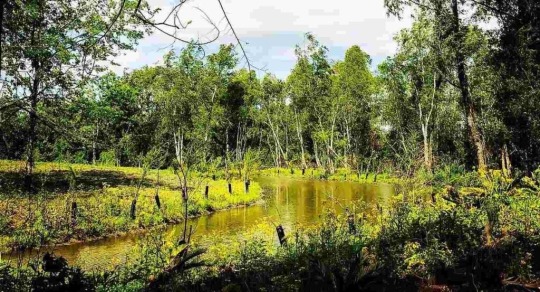
The Lower Ninth Ward of New Orleans has recently witnessed an incredible eco-renaissance following decades of damage and neglect.
Led by a local community development group, a 40-acre wetlands park has been restored to glories past with hundreds of local trees that attract over a hundred species of birds, plus joggers, picnickers, and nature lovers besides.
The story begins with Rashida Ferdinand, founder of Sankofa Community Development Corporation (CDC). Growing up in this historic part of New Orleans, where Black homeownership thrived, where Fats Domino was born, and where locals routinely went out into the wetlands to catch fish and crustaceans, she watched as it suffered from years of neglect.
Poor drainage, ruined roads, illegal trash dumping, and unmitigated damage from hurricanes slowly wasted the wetland away until it was a derelict eyesore.
In the name of restoring this wild heritage indicative of the culture in the Lower Ninth, and in order to protect her communities from flooding, Ferdinand founded the Sankofa CDC, and in 2014 entered into an agreement with the City of New Orleans for the restoration of Sankofa—a 40-acre section of neglected wetlands in the heart of the Lower Ninth.
The loss of Sankofa’s potential to dampen flooding from storms meant that over the years dozens of houses and properties were flooded and damaged beyond the ability of the inhabitants to recover. Forced out by a combination of nature’s fury and government failure, the cultural heritage of the community was receding along with the floodwaters.
Ferdinand knew that restoring natural flood barriers like Sankofa was key to protecting her community.
“Hurricane protection is a major concern in the community, but there’s a lack of trust in the infrastructure systems that are supposed to protect us,” Ferdinand told the Audubon Society.
Today, Sankofa Wetlands Park is a sight to behold. Hiking trails snake through a smattering of ponds and creeks, where bald cypresses and water tupelo trees continue to grow and cling to the ground even during storms. Picnic benches have appeared, wheelchair-accessible trails connect sections of the park to parts of the Lower Ninth, and local businesses are seeing more visitors.
Visiting birders have recorded sightings of over 100 species of songbirds, ducks, near-shore waders of all kinds, egrets, and herons, and the park also acts as a home and refuge for otters, beavers, and a variety of amphibians and reptiles.
It needed a lot of work though. Thousands of invasive tallow trees had to be uprooted. 27,000 cubic meters of illegally dumped trash compacted into the dirt had to be removed. A 60-year-old canal dug by the US Army Corps of Engineers had to be disconnected, and all new native flora had to be planted by hand.
Audubon says that Ferdinand routinely can’t believe her eyes when she looks at the transformation of Sankofa into its current state.
“Seeing butterflies, birds, and other pollinators in the park is a sign of a healthy ecosystem,” she says. “All we had to do was create the right conditions.”
Slated for official completion in 2025 with an outdoor amphitheater, interpretive signage, and additional trails, Ferdinand and the CDC have their eyes set on an even larger area of wetlands to the north of Sankofa.
Along the way, Ferdinand and the CDC attracted many helping hands, and entered into many partnerships, But the catalyst for change arose from the spirit and determination of one woman in the right place at the right time, for the benefit of hundreds in this historic heart of a historic city.
#new orleans#good news#environmentalism#science#environment#nature#usa#restoration#rewilding#wetlands#conservation#climate change#climate crisis#animals#birds#trees#disaster prevention and preparedness
187 notes
·
View notes